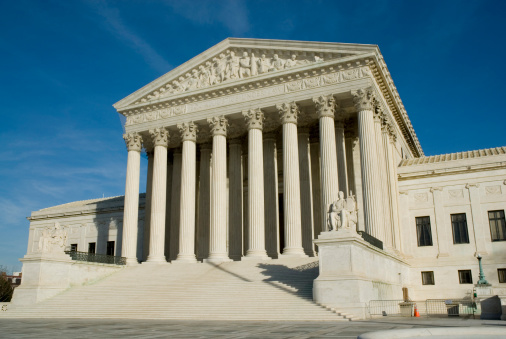D&O experts eye Supreme Court pleading standards case
- May 21, 2025
- Posted by: Web workers
- Category: Finance

The U.S. Supreme Court’s looming decision on pleading standards in a securities class action may have a significant impact on future lawsuits as well as directors and officers liability insurance, experts say.
The high court’s decision in Nvidia Corp. v. Ohman et al. could pave the way for securities class action plaintiffs to use expert opinions to satisfy the heightened pleading standards established by the Private Securities Litigation Reform Act of 1995 and survive motions to dismiss if the justices affirm the existing ruling from the 9th U.S. Circuit Court of Appeals.
“Given the prevalence of defendants challenging the sufficiency of allegations in securities claims at the motion to dismiss stage, the outcome at the U.S. Supreme Court could have a significant impact on future claims, including whether early dismissal motions are successful and whether cases proceed to expensive and resource-intensive discovery that can impact settlement values,” said Geoffrey B. Fehling, a Boston-based insurance recovery partner at Hunton Andrews Kurth LLP.
In its August 2023 ruling, a 2-1 panel partially reversed the dismissal of a shareholder class action that accused Santa Clara, California-based technology company Nvidia and several of its officers of misrepresenting the amount of revenue from one of its products that was attributable to purchases by video gamers rather than cryptocurrency miners.
The majority concluded that the plaintiffs sufficiently alleged scienter, or willful intent to deceive, on the part of Nvidia President and CEO Jensen Huang by citing the testimony of two confidential former employees. The majority also found the plaintiffs sufficiently alleged that statements concerning the product’s revenue from cryptocurrency miners were false, based on the work of an expert consulting firm.
Nvidia and the other defendants sought review from the U.S. Supreme Court, which agreed to take the case in June. The justices heard oral arguments on Nov. 13. Early in the proceedings, however, Justice Sonia Sotomayor seemed skeptical about why the court took up the case, asking counsel for Nvidia, “Is this entire case just an error correction?”
Experts say the ruling could come down faster if the justices simply view the case as an error correction.
“It is not really the job of U.S. Supreme Court to ‘Monday morning quarterback’ what the Ninth Circuit did, but rather to address splits among federal circuit courts,” said Maurice Pesso, a financial lines insurance coverage partner at Kennedys Law LLP.
He said insurers are intently watching whether the justices give commentary on the plaintiffs’ use of expert reports to satisfy the PSLRA’s heightened pleading requirement, but he is skeptical that the nation’s high court will adopt a bright-line rule on the issue.
“I don’t think the court is going to change the landscape on how easy or hard it is to get by a motion to dismiss,” he said.
Companies that fail to win a motion to dismiss are more likely to tap into their D&O coverage because they will likely exhaust their self-insured retention, he said.
“If the case unfortunately gets by the motion to dismiss, then a combination of defense costs going forward and settlement values can significantly erode or fully deplete a D&O insurance program,” Mr. Pesso said.
Mr. Fehling said, “Any shift in pleading standards that favors plaintiffs or defendants could impact the D&O insurance market.”
Stronger pleading standards would decrease the success rate of securities claimants, leading to more early dismissals and reducing D&O risks, which could lead to more favorable pricing and coverage for policyholders, he said. Conversely, less stringent pleading requirements could lead to more failed motions to dismiss, which would send cases into expensive discovery and push defendants to consider settling, even for less compelling claims.
Higher litigation costs and more settlements would lead to higher losses for insurers, affecting risk profiles, underwriting, and pricing, Mr. Fehling said.
The high court’s ruling is unlikely to have a material impact on the D&O market in the near future, said Walker Newell, a securities lawyer and vice president of management liability at Woodruff Sawyer & Co.
“The biggest, highest frequency items that hit D&O policies are securities class action settlements. If you have any additional barriers put in place to prevent plaintiffs from getting into discovery, that could drive down the frequency of settlements, which would be meaningful to the market over the long run,” he said.



